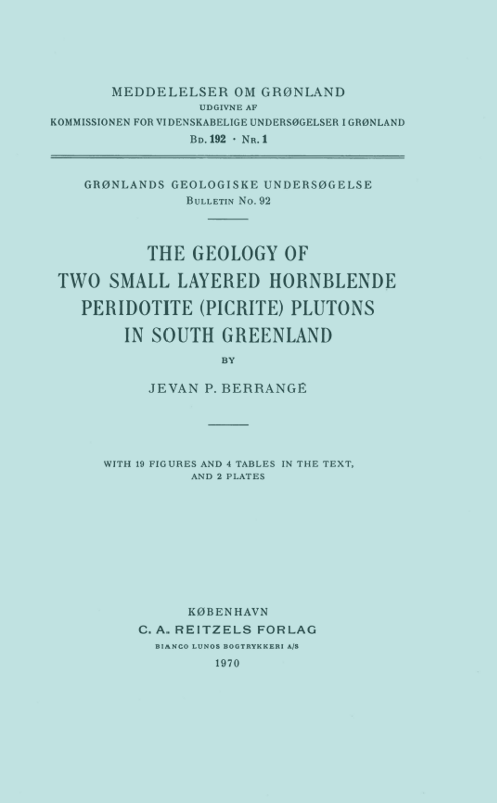The Geology of two small layered Hornblende Peridotite (Picrite) Plutons in South Greenland.
DOI:
https://doi.org/10.7146/mog.v192.149935Resumé
Two ultramafic dykes, which pinch and swell both vertically and horizontally and have a form similar to some kimberlite bodies, were intruded 1700 to 1335 m.y. ago during the 2nd episode of Ketilidian plutonism. Contact metamorphism of the adjacent granite was slight -albite-epidote hornfels facies. Petrological, mineralogical and chemical evidence indicates that the parent magma was picritic in composition, that it underwent flowage differentiation as a result of rapid intrusion, and then magmatic differentiation with gravity settling. The internal picritic (chemical classification) layered group crystallised first and includes hornblende peridotites, hornblende-hypersthene peridotites and rare harzburgite. The border group which crystallised later is formed of hypersthene-olivine hornblendites that chemically are picrites, and mica hornblendites that chemically are monzonites with affinities to kentallenite. Hornblende gabbro is a minor late differentiate. Steeply dipping banding cuts the earlier rhythmic layering and is thought to have formed by diffusion of material into cooling cracks developed prior to complete solidification. There are local concentrations of sulphides and platinoids. Three complete silicate analyses and a number of analyses for the platinoids, Au, Cr, Co, Cu, Ni, Ag, Pb and Zn are presented.

Downloads
Publiceret
Citation/Eksport
Nummer
Sektion
Licens
Coypyright by the authors and the Commision for Scientific Research in Greenland. No parts of the publications may be reproduced without the consent of the copyright holders.

